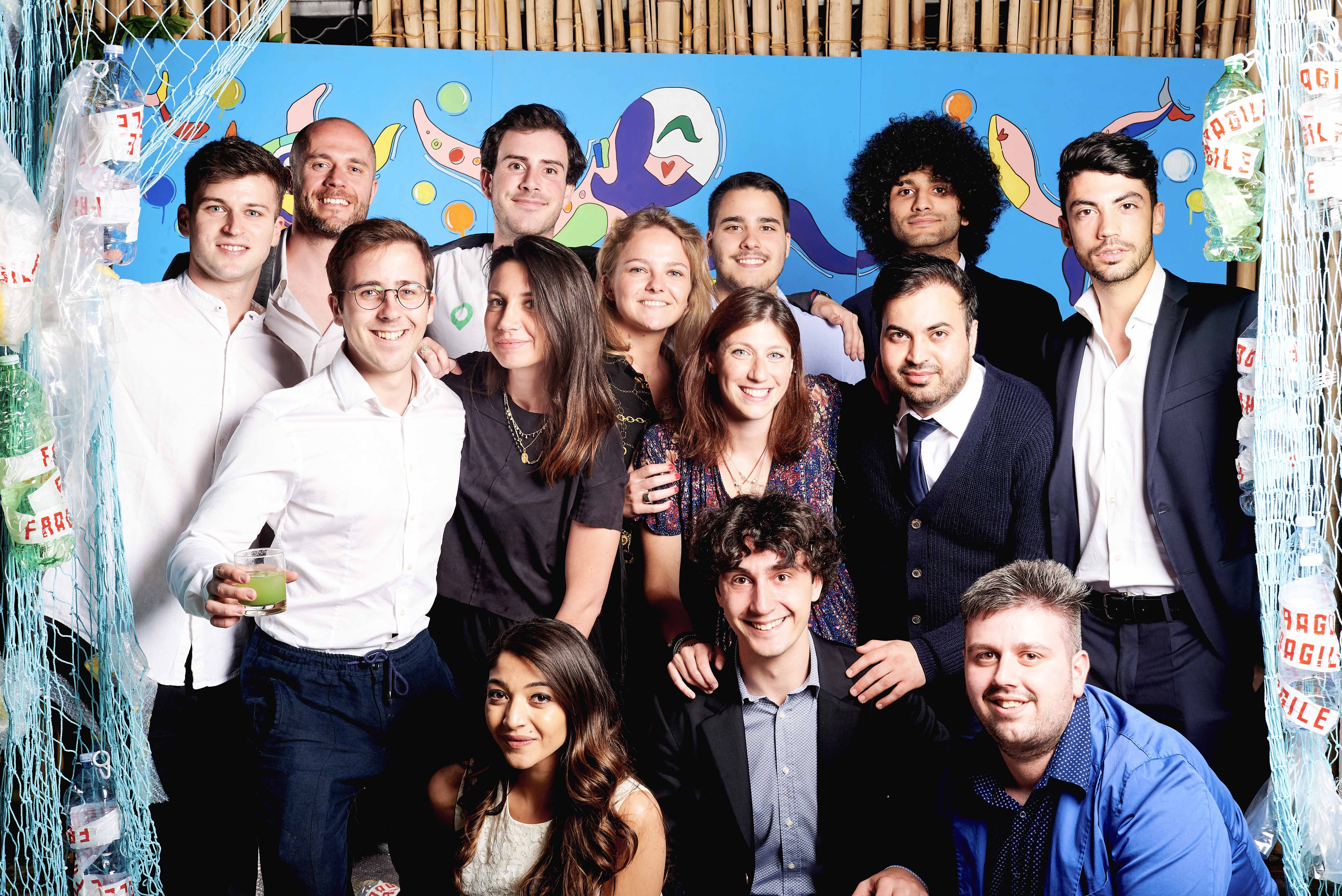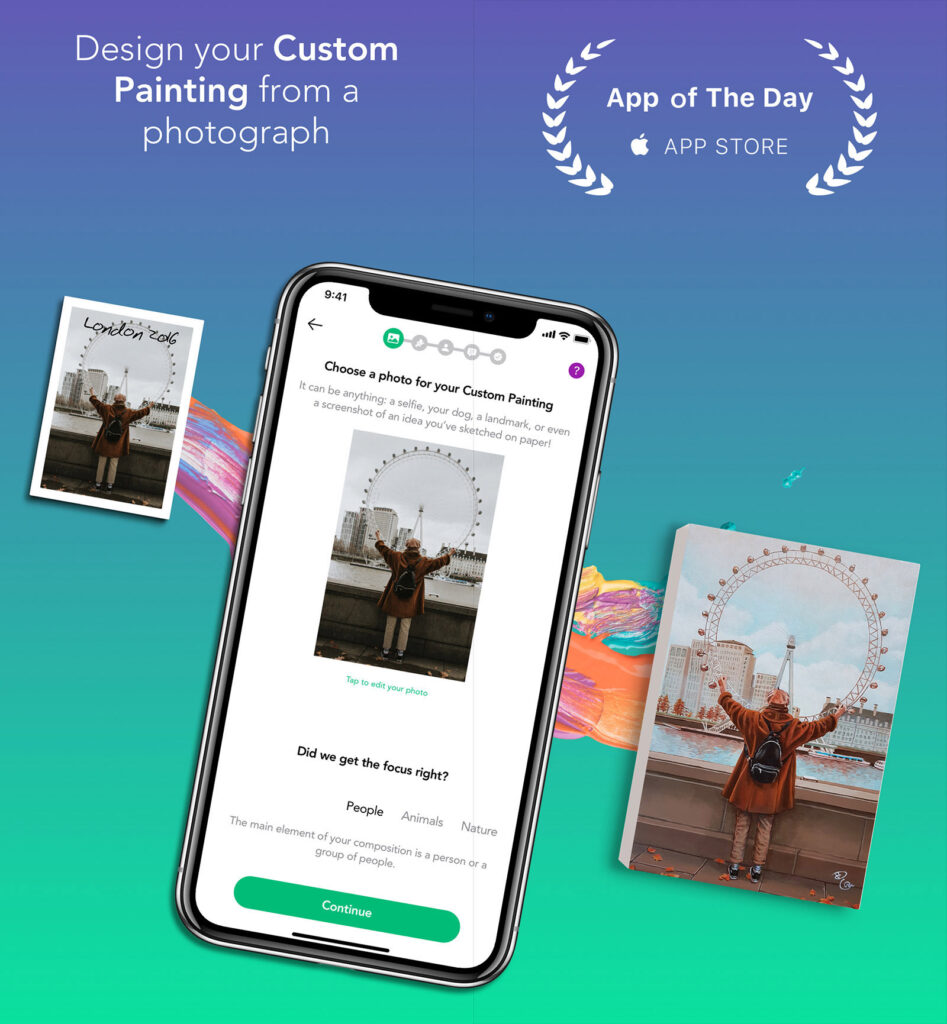Hello fellow UX designers, and welcome to another exploration of our fascinating field. Today, we’re delving into a psychological phenomenon that plays a subtle yet significant role in our work: the Hawthorne Effect. If you’re scratching your head right now, don’t worry—you’re not alone. Despite its impact, this concept often flies under the radar in user research discussions.
In essence, the Hawthorne Effect is the behavioral change people exhibit when they know they’re being observed. Remember those times when your participants suddenly became experts at navigating your prototype, breezing through tasks they usually find challenging? How about when they started behaving like they’ve swallowed a user manual, acting far more adeptly than your research suggested they should be? Or think about how drivers spontaneously become more disciplined when they spot a traffic cop or a surveillance camera on the road. That could very well be the Hawthorne Effect in action.

This concept first emerged from studies conducted at the Western Electric Hawthorne Works in Chicago during the 1920s and 1930s. Researchers found that workers’ productivity improved when changes were made to their environment, like increasing the lighting. But here’s the twist—their productivity also rose when the lighting was dimmed. In fact, it seemed that any change, led to an increase in productivity.
However, it was only later in the 1950s, when researcher Henry A. Landsberger analyzed these studies, that the real reason of the matter was identified. The increased output wasn’t just a result of changes in the physical environment—it was tied to the unusual extra attention and supervision that factory workers received from researchers. This reinterpretation of the data led Landsberger to coin the term we now know as the “Hawthorne Effect.”
But what does an almost century-old study on factory workers have to do with UX research? Quite a lot, as it turns out. When we’re conducting user studies—whether usability testing, interviews, or field studies—we are observing people, and that means the Hawthorne Effect can come into play. It can cause users to modify their behavior, which may lead to data that doesn’t truly reflect their natural interactions with a product or service.
We’re going to dig deep into this phenomenon, exploring how it impacts our research and, most importantly, discussing strategies for understanding and overcoming it. So buckle up—it’s going to be an enlightening ride!
The Hawthorne Effect in UX Research
It’s story time, friends! Let’s bring this Hawthorne Effect to life with some real-world UX research examples.
Real-life Examples
Picture this. You’re conducting a usability testing session for a new app. The test participant, usually clumsy with tech, is suddenly navigating through the app like a pro, breezing through tasks that your previous research indicated would be challenging. They don’t even stumble on that awkwardly placed call-to-action that you’ve been debating about. This sudden behavioral change might make you question your user personas or the accuracy of your user journey maps. But it might just be the Hawthorne Effect making its presence felt.
Or consider another scenario. You’re observing users in a field study, and they seem to be interacting with your product more attentively than they ordinarily would. They’re taking their time, diligently exploring every feature. It almost feels like they’re performing for the ‘camera’. Could this be their natural behavior? Possibly, but the Hawthorne Effect might also be at play here.
Implications of the Effect
Okay, so we’ve seen the Hawthorne Effect in action. Now, let’s chat about why we, as UX designers, should give it more than a passing thought.
Firstly, let’s be clear that the Hawthorne Effect isn’t inherently ‘bad‘. In fact, in some cases, it might even help you uncover usability issues that would typically fly under the radar. But, and it’s a substantial ‘but‘, it can introduce distortions and biases into your user research.
When users modify their behavior due to the awareness of being observed, the data you collect may not accurately reflect their natural interactions with your product. This means you could be making design decisions based on skewed information. It’s like trying to paint a portrait with a warped mirror. You might capture the essence, but the details — those tiny nuances that often make a significant difference in UX — might get lost.

The Hawthorne Effect could lead you to believe that your product is more intuitive or user-friendly than it really is. This could cause you to overlook potential pain points or areas of confusion for your real-world users. And as we all know, in our field, missing such critical insights could be the difference between a user delighting in our design or ditching it.
So, while the Hawthorne Effect might not be entirely avoidable, it’s essential to be aware of its potential impact on our research. But don’t worry – we’re not just going to leave it at that. As we move forward, we’ll discuss how to understand and even overcome this tricky little phenomenon. Spoiler alert: it’s not as daunting as it sounds. So, stay with me on this exciting journey.
Understanding the Hawthorne Effect in Depth
Let’s dive a little deeper, shall we? It’s one thing to recognize the Hawthorne Effect when it shows up at our UX research party, but understanding why it acts the way it does—that’s where things really get interesting.
Psychology behind the Hawthorne Effect
First stop, a quick dive into the psychology that fuels this phenomenon. To put it in plain terms, it’s all about human nature. We, as human beings, have an inherent desire to be perceived positively. That’s just how our social wiring works. So, when we know we’re being watched or observed, we instinctively step up our game. We try to perform better, to make fewer mistakes, to be our best selves. And this doesn’t just apply to UX research or factory workers from the 1930s—it’s universal.
Think back to school days. Remember how everyone’s handwriting mysteriously improved when the teacher was walking around the class during a test? Or how about this: have you ever noticed how you’re suddenly brimming with professionalism and productivity when your boss is in the office or the manager walks by your workstation? That’s right! That’s the Hawthorne Effect working its not-so-subtle magic.
The Effect’s Impact on Data Quality
Now that we understand the psychology behind this effect, it’s time to look at how it might muddy the waters of our user research data. The data we collect during user research is our guiding star—it helps us understand our users, their behavior, their needs, their frustrations. It shapes our design decisions and ultimately impacts the overall user experience.
However, if this data gets tainted with the Hawthorne Effect, it’s akin to navigating with a faulty compass. Users behaving differently because they’re aware of being observed can lead us to conclusions that don’t genuinely reflect their natural interactions or authentic experiences with our product.
If, for example, users are breezing through tasks during a usability test because they’re consciously trying to perform well, we might falsely conclude that our design is intuitive and easy to use. This could lead us to overlook genuine usability issues that might frustrate users in a real-world scenario.
Let’s say we’re designing an e-commerce app. If a user finds it difficult to locate the checkout button in a real-world scenario, that’s a major issue. But if, during the test, they’re more attentive because they know we’re observing them and they find the button without any hiccups, we might miss this critical design flaw.
Similarly, if users are taking their time exploring every feature of our product during a field study due to the awareness of being observed, we might miss out on understanding their actual priorities and tendencies when using our product.
It’s also worth noting that the Hawthorne Effect can impact both qualitative and quantitative data. For qualitative data, it might result in overly positive feedback or an overestimation of task ease. On the quantitative side, it might lead to unrealistically short task completion times or inflated success rates. In essence, it can distort our understanding of our users, leading us to design solutions based on a mirage rather than the reality. And that, my fellow UX enthusiasts, is why understanding this effect and finding ways to mitigate it is crucial. But fear not, as we continue our journey, we’re going to arm ourselves with the tools to do just that! So, let’s carry on, shall we?
Mitigating the Hawthorne Effect in UX Research
Alright, we’ve talked about the what and the why of the Hawthorne Effect. Now, let’s roll up our sleeves and get into the how—to mitigate it, that is. Because, let’s face it, the last thing we want is our user research data doing the cha-cha under the influence of the Hawthorne Effect.
1. Building Rapport
First things first, it’s all about creating a comfortable, relaxed environment for your test participants. The less they feel like lab rats under a microscope, the more likely they are to behave naturally.
Start with a friendly introduction, explain the purpose of the study, and stress that you’re testing the product, not them. Assure them that there are no right or wrong answers, and their honest feedback is what truly matters. This helps alleviate any pressure to ‘perform’. Remember, it’s all about humanizing the experience.
2. Inducing Habituation
Habituation is a fancy term for getting used to something over time. The idea here is to give participants enough time to forget they’re being observed. Depending on the context of your study, this could mean giving them some time to familiarize themselves with the environment or the product before starting the test or observation.
3. Natural Tasks
Design your research tasks to mimic real-world activities as closely as possible. The more the tasks align with the user’s typical interaction with the product, the less they will feel like they’re performing a task for the study, thus reducing the chance of them modifying their behavior.
4. Unobtrusive Observation
Keep your observation low-key. If you’re conducting an in-person study, try to blend into the background. For remote studies, let participants know that you’ll be turning off your camera to help them focus on the tasks (even though you’re still observing their screen).
5. Longitudinal Studies
When possible, consider conducting longitudinal studies. Observing user behavior over an extended period can help diminish the Hawthorne Effect, as users are likely to revert to their natural behaviors over time.
6. Anonymity and Privacy
When appropriate, use methods that offer a degree of anonymity to participants. Surveys, for example, can be effective in capturing genuine feedback as they eliminate the immediate presence of an observer.
Remember, the goal isn’t to eliminate the Hawthorne Effect completely—after all, we’re dealing with human nature here. However, by being aware of it and employing strategies to minimize its influence, we can ensure that it doesn’t significantly skew our research results. And that, my friends, brings us one step closer to capturing the most authentic, useful data possible, which ultimately helps us create better, more user-centered designs. And isn’t that what we’re all here for? So, let’s get out there and design with understanding and empathy!
Case Study: Artupia – Unmasking the Hawthorne Effect
Picture this: Milan, 2019. I was working as the sole UX designer at a vibrant start-up named Artupia, a burgeoning platform aiming to connect artists and art lovers worldwide. Artupia was a unique concept, a blend of an art marketplace and a social platform with an engaging website and an intuitive iOS app. It was there that I encountered the Hawthorne Effect in its full glory.
Our youthful and energetic team, all in our 20s, was small but mighty—consisting of just a few members. Among us was my dear friend, Alberto Lina at the helm of Artupia as the CEO, and my other friend, the now co-founder of UX Parrot, Jim Kouhyar Binyaz, was our proficient backend developer. In this creative, dynamic environment, we were working relentlessly to refine our platform, make it more user-friendly and immersive. As a UX designer, my goal was to understand our users, their needs, and their behaviors to make Artupia the go-to platform for artists and art aficionados alike. Little did I know, I was about to come face-to-face with the Hawthorne Effect.

Background
At Artupia, my challenge was to make the platform as user-friendly as possible. One particular project was centered around a revamp of the Custom Painting feature, which let users transform a personal photo or image into a handcrafted canvas painting. As an integral part of the redesign process, I planned usability testing to evaluate the new design’s effectiveness.
The Hawthorne Effect in Action
The initial rounds of usability testing went incredibly well. Users seemed to navigate the process of creating a custom painting with ease—uploading an image, selecting an artist, setting the specifications, and placing an order. However, the smooth sailing felt a tad unrealistic.
A closer look at the testing results, in contrast with existing analytics, confirmed my suspicion. The time users took to create a custom painting during testing was significantly less than what was observed in real-world usage. It was the Hawthorne Effect in disguise!
– Video shows a user trying our custom painting without facing any issue.
Mitigation Strategy
Realizing the Hawthorne Effect‘s influence, I sprang into action.
- Building Rapport: To start each testing session, I made it a point to connect with the users on a personal level, assuring them that the focus was on testing the product and not their abilities. I emphasized that all actions and feedback were valuable.
- Inducing Habituation: I introduced a warm-up period at the beginning of the testing sessions, giving users a chance to explore the platform freely and get comfortable with the interface before the actual testing began.
- Natural Tasks: I redesigned the tasks to reflect real-world scenarios—for instance, creating a custom painting to give as a birthday gift for a loved one.
- Unobtrusive Observation: I made my presence less noticeable during the testing by muting my microphone and turning off my camera in remote sessions.
Outcome
Post-mitigation strategies, I noticed a marked difference. Users’ interactions with the platform became more authentic, mirroring the behavior observed in real-world usage. The time taken to create a custom painting matched more closely with the existing analytics, and the feedback became richer and more varied.
Significantly, users pointed out that the process of setting their requirements for the custom painting could be simplified and made more intuitive. Had I not mitigated the Hawthorne Effect, I could have missed this critical insight.
Armed with this feedback, I improved the user interface, streamlined the customization process, and ultimately enhanced the overall user experience. It was an enriching experience, one that demonstrated the need to not just understand our users, but also how our methods of observation can influence their behavior.
The final flow for Artupia’s custom artwork ordering feature wasn’t just user-friendly – it was award-winning, and landed us in the spotlight as the ‘App of the Day‘ on the App Store. A proud day for our team! 🎉

Best Practices and Key Takeaways
Well, fellow UX travelers, we’ve come a long way on this enlightening journey. From an obscure factory in 1920s Chicago to a modern-day art marketplace in Milan, the Hawthorne Effect has proven to be an intriguing guest in our research parties. As we wrap up this exploration, let’s summarize some best practices and key takeaways to bear in mind when conducting UX research:
- Awareness of the Hawthorne Effect: Just knowing that the Hawthorne Effect exists is the first significant step. Keep it in mind as you conduct your user research, always remembering that the knowledge of observation can change behavior.
- Building Rapport: Make an effort to establish a connection with your participants. Make them feel comfortable. Emphasize that you’re testing the product, not them.
- Habituation: Give your participants time to adapt to the testing environment. Introduce a warm-up period for them to familiarize themselves with the system and feel less observed.
- Natural Tasks: Design tasks that reflect real-life situations. This encourages natural behavior and generates more authentic responses.
- Unobtrusive Observation: Make your presence as unnoticeable as possible during the testing. This might mean muting your mic and turning off your camera during remote sessions.
- Cross-referencing Data: Always cross-reference your usability testing data with real-world data. This will help you identify any discrepancies that could be the result of the Hawthorne Effect.
Remember, our aim as UX professionals is to understand our users authentically and holistically. We need to get at the truth of their experiences, behaviors, and needs—beyond the veil of observation. The Hawthorne Effect can make this challenging, but with awareness, understanding, and the right strategies, we can mitigate its impact.
And the biggest takeaway? Never stop questioning. If something feels off—if the data seems too good to be true, or doesn’t align with what you see in the real world—trust your instincts. Dig deeper. You never know what you might uncover, just like our journey with the Hawthorne Effect.
UX research, like any field, has its nuances and complexities. But remember, every challenge is a new opportunity for discovery, learning, and growth. So, embrace it, navigate it, and continue creating extraordinary user experiences.
And with that, we bring this exploration to a close. I hope this dive into the Hawthorne Effect has been as enlightening for you as it has been for me. So, until our next UX adventure, keep exploring, keep questioning, and keep designing!
Conclusion
And just like that, we’ve navigated the intricacies of the Hawthorne Effect and its influence on user research. This journey has shown us that while we aspire to capture unfiltered, authentic user behavior, there’s a silent actor—the Hawthorne Effect—that might be adding a layer of performance to our research stage.
It’s crucial for us as UX designers to acknowledge this actor’s presence and mitigate its influence. After all, the heart of our work lies in truly understanding our users, and the key to this understanding is authenticity. As we continue to observe and learn from our users, we must aim to make them feel as comfortable and as “unobserved” as possible, encouraging them to behave as they naturally would.
Remember my experience at Artupia, where the Hawthorne Effect posed a significant challenge? I managed to address it by implementing strategies like building rapport, creating more natural tasks, and keeping my observation unobtrusive. Each challenge I faced was an opportunity to learn, adapt and refine my approach, ultimately helping me create a better, more user-centered product.

The Hawthorne Effect, just like many other facets of user research, adds depth to our field. It makes our work challenging, sure, but also incredibly rewarding. It pushes us to constantly learn, grow, and most importantly, empathize with our users. And that’s the essence of being a UX designer, isn’t it?
As we draw this discussion to a close, my hope is that this newfound understanding of the Hawthorne Effect helps you add another tool to your ever-growing UX toolkit. May it guide you in your quest to create user experiences that are not just effective and enjoyable, but also truly authentic.
In this fascinating field of ours, the learning never stops, and that’s what makes it so exciting. Here’s to many more adventures in our UX journey. Keep exploring, keep questioning, and keep growing. Until next time, happy designing!
Important Notice: The articles, insights, and opinions I express here on UX Parrot are solely my own, arising from my personal journey in the UX industry. They do not represent or affiliate with the views or stances of any organization I’ve been associated with in my professional capacity, past or present. Sina Ranjbar.


